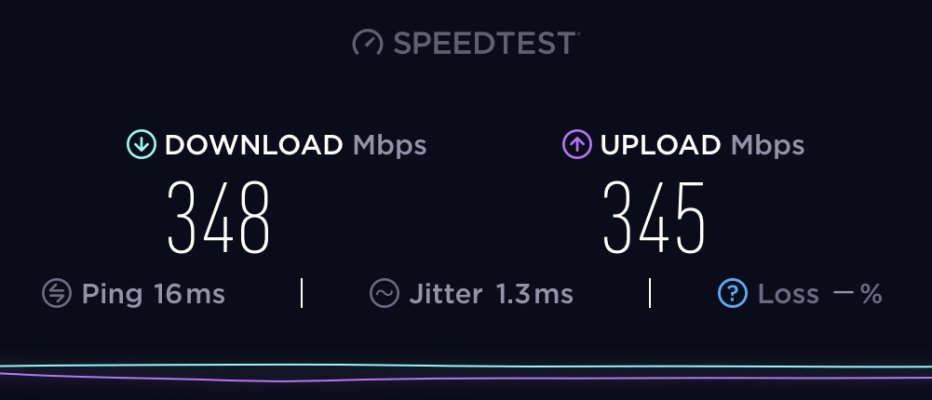Do you know how many radios/antennae are in your portable device for the band that you are using? Often for portable devices it is only one which would limit you to one spatial stream - not the three or four that modern routers and laptops support.
After you have your laptop connecting and performing at the desired
Speeds using wired ethernet, switch your laptop to wireless mode and continue the testing. Laptops will often have multiple radios per band where portable devices only have one.
Also pay attention to your hardware link speed before performing end to end tests. This can be seen in both Windows and Android on to he details/status page for the network device of interest. For wired Ethernet this should be something like 100 Mbps or 1Gbps Also for WiFi, you should know what the maximum link speed should be for a givenbumber if radios. In old 802.11G systems the max link rate was 54 Mbps. In N or AC systems, multiple radios are supported (aka multiple spatial streams). Leading to higher max link rates.
Only after you have the hardware link speed operating where you think it should be would you do an end to end peformance test (ie ookla speedtest).
Gauss
P.s. I am in the process of upgrading a 10 year old G WIFi network, so I have been learning this during the past week or so.
Adding to my previous post, now that I am not a passenger in a car returning home from vacation, is that you need to know what is the bandwidth (BW) of the channel you are using vs what you are expecting (ie marketing max speeds on the product literature).
Most routers set the BW to auto by default, which is probably not the best for troubleshooting. Original BW was 20 Mhz in the origianl 802.11g days if I am not mistaken. Subsequent version allowed channel bonding giving BW's of 40 Mhz, 80 Mhz, and 160 Mhz. A doubling of the bandwidth will typically double your link/hardware speed.
Now the bad part is that on the 2.4 Ghz band, it is very hard to get a link at more than 20 Mhz due to RF congestion in the city and the number of devices. In rural locations, higher BW (than 20 Mhz) on 2.4 Ghz may be possible. The good news is that if you operate in the 5Ghz band, getting larger than 20 Mhz working is more easily achieved due to relatively fewer 5 Ghz devices vs 2.4 Ghz.
So when you see that your 'AC' class router/AP should be able to do 433 Mbps on the hardware/link speed with a single spatial/radio stream, I believe this is assuming 80 Mhz BW - not realistic on 2.4 Ghz. 2.4 Ghz. 78 Mbps would be more likely link/hardware speed achievable in this environment. A factor of 4 difference -- just based on BW assumptions.
I have found if you google MCS index you will find charts that will help to decipher this such as
https://en.wikipedia.org/wiki/IEEE_802.11ac half way down near "Modulation and coding schemes".
Note as I mentioned above, the link/hardware speed is what you will see when you look at your network devices status page. What type of throughput you will get via Ookla speedtest.net is a more complicated problem that brings your ISP into the picture.
Solve your local problems first!


